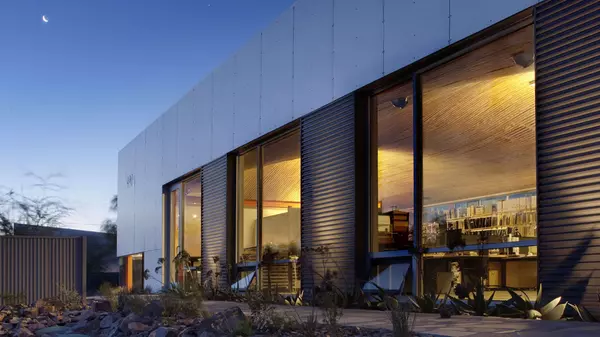In this class, the teachers want you to be wild
By Margaret Roach
For The New York Times
What if the first step in transforming your lawn-dominated home landscape into a place of enhanced biodiversity could be fun, educational — and free?
Plan it Wild, a sustainable landscaping firm in Westchester County, N.Y., considered the question. The company kept hearing some common refrains from potential customers who wanted help rethinking their yards: Where do I even start? Why is this all so intimidating?
Many of those who inquired realized they didn’t have the budget to hire a design firm to guide them, lived outside Plan it Wild’s coverage area or just wanted to do it themselves. But one after another lamented that the task seemed daunting without expert support.
Instead of simply saying “Nice to meet you” and moving on, Plan it Wild saw an opportunity to simplify the call to action and make the process more accessible, regardless of location or budget.
As the idea was developing, Joanna Hall transitioned from company adviser to CEO. With a background in technology and artificial intelligence and having worked with companies to innovate with a focus on sustainability, she began planning with new colleagues who brought distinguished conservation backgrounds to the mix.
They believed that a key first step to introducing newcomers to ecological horticulture would be helping people understand what a healthy yard looks like, Hall said.
“We knew that it had to be light and fun and gamified, a bit of a self-assessment,” she said.
They imagined crafting an introductory interactive test, not unlike the way people begin other self-improvement challenges like a new fitness regimen or learning another language.
In the 2023 growing season, Plan it Wild began experimenting with some of its concepts with a small, local group of participants, the first iteration of what the firm called the Less Lawn More Life Challenge. The Plan it Wild team’s sort of ecological self-help program has the ambitious ultimate goal, Hall said, of “incubating a national platform” aimed at “making rewilding mainstream.”
By the challenge’s third year, nearly 10,000 participants from 49 states joined for a 12-week email campaign that started in May, kicking off with a webinar by Douglas W. Tallamy, an ecologist whose native-plant-focused nonprofit, Homegrown National Park, has become a Plan it Wild collaborator. So have other national and regional environmental nonprofits, including Wild Ones, a native-plant-focused group founded in 1979.
The challenge is now available on demand: No need to wait for a springtime kickoff date to learn how your landscape is performing ecologically and how to enhance it.
A quiz loaded with learning
The challenge begins with a self-test that produces the Wildr Score, which was developed by Plan it Wild with input from the Vermont Center for Ecostudies and Homegrown National Park. The aim is to take a “a snapshot of your yard’s health right now,” but it also does something else.
As you answer multiple-choice questions about your property — about its plants and animals, or how you manage the yard, for example — there is also an opportunity to start learning.
Simply answering the questions means considering your yard with a keener focus than you might otherwise. Each question hints at what elements figure into the biodiversity equation — with every reply revealing where you currently rate on it.
Each page also includes a “wild fact” tip, such as about how many birds can perish from striking window glass unless simple deterrents like decals or screens are employed, or about how artificial light at night endangers insects.
Every action to improve the ecological health of your land counts, the challenge stresses from the start. Even a spot of 5 by 5 feet as a first project area can make a difference and represents a good training ground for rewilding newcomers, the site says.
A short video in each email explains the week’s call to action, topics such as identifying invasive plants or adding a year-round water feature. The emails also provide more detail on the week’s theme, and resources to dig even deeper, often sourced from Plan it Wild’s collaborator network.
Some videos feature guest experts from those partner organizations, too.
Edwina von Gal, a landscape designer who founded the nonprofit Perfect Earth Project, suggests in one video that participants “close the loop”— striving for sustainability by neither exporting nor bringing in raw materials, instead making use of everything their yard produces.
That “debris” in your garden, she says in the video, is food it “made for itself” and “exactly biologically correct” for your site.
“They call it yard waste, but nature doesn’t produce waste. Only humans do,” von Gal said in an interview. “Don’t confuse shopping with caring,” she added, alluding to products like mulches and compost that most gardeners purchase.
Tactics to that effect can be as simple as the one she demonstrates, piling fallen twigs into a teepee-shaped tower instead of discarding them. Von Gal was delighted to see that her twig tower had become “a wren tent” when a bird made it a home.
The email accompanying that week’s challenge included other possibilities for upcycling brush, including as a dead hedge, which is a hedge or a fence formed by stacking branches and twigs between support stakes.
“Closing the loop is a game you can play with yourself, an interaction,” she said. “Can I actually send absolutely nothing to the landfill?”

Making the wilder landscape ‘legible’
The challenge addresses what Plan it Wild recognized as another obstacle to engagement with ecological design: concern about what the neighbors or homeowners associations will think of the looser style.
Leslie Needham, the founder of a residential landscape design firm, Leslie Needham Design, in Bedford, New York, hosted a challenge video titled “Signal Intention” offering “design tricks to make the landscape legible,” she said in an interview, “so it doesn’t look like you have just taken leave of the place.”
Her tactics include framing views, keeping bed and path edges crisp, and creating focal points, whether with a single tree, a sculpture, a water feature, a birdhouse or even “woodland teepees” similar to von Gal’s, she said.
Her favorite legibility enhancer: a pathway through your plantings.
“A path is the easiest thing you can do,” she said, particularly in a meadowlike area. “It beckons you through and is an easy way to embrace and approach and be part of your wilder landscape.”
If space allows, create a large circle in the middle of the path, she said, making an area big enough to place some chairs, “like a terrace in the middle of your meadow.”
“It’s really important for people to sit in these landscapes because you do see the benefits up close,” she added. “I’ve gotten better on my butterfly ID by immersing myself in these landscapes, and you start to really experience and enjoy their deeper beauty, the heartbeat of them.”
The 12-week challenge ends with repeating the Wildr Score quiz in the hopes that some of the changes inspired along the way will have moved the needle.
Among this year’s participants, 5,500 retook the quiz at the end of the challenge, Hall said, and 90% of them saw their score go up.
Some participants were hungry for still more information after finishing the free challenge and have traded up to a $49 digital action plan tailored to their Wildr Score results and property details.
Though Hall and other Plan it Wild principals come from the nonprofit sector, they decided to create these digital offerings alongside the firm’s on-site landscape services as a new part of the business. They feared that relying on philanthropy at a time of accelerating biodiversity loss might be risky.
“We’re trying to catalyze a revolution to restore our planet, and we believe we can go much further and faster as a business today,” Hall said. “The more successful we are, the more plants there are in the ground, the more nature we have restored.”
Categories
Recent Posts










GET MORE INFORMATION


